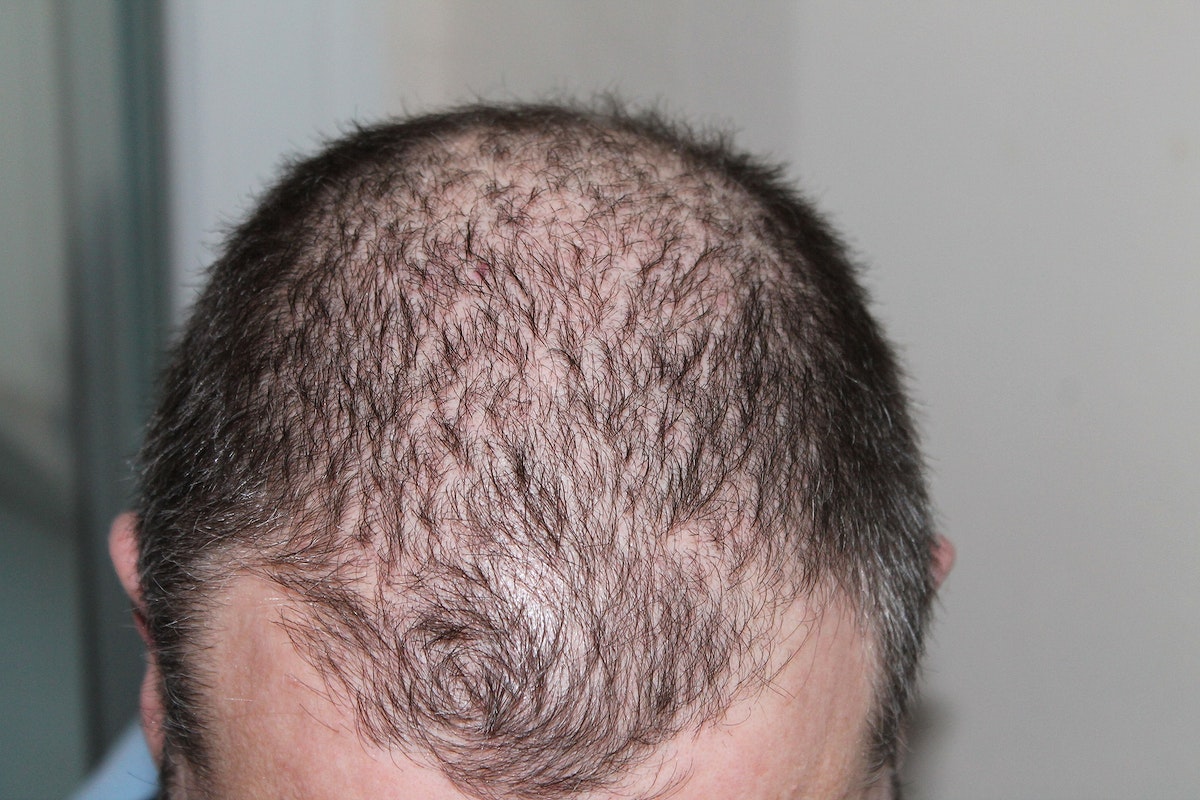Hair Transplant Cost: Navigating the Maze of Pricing – Hair loss can be a challenging experience, impacting self-esteem and confidence. As the demand for hair transplants grows, so does the curiosity about the associated costs. In this comprehensive guide, we’ll delve into the intricate world of hair transplant costs, exploring factors that influence pricing, different procedures and their expenses, and essential considerations for those contemplating this life-changing decision.

Factors Affecting Hair Transplant Cost
The cost of a hair transplant is influenced by various factors. Understanding these elements can help individuals make informed decisions about their investment in regaining a full head of hair.
Quality of the Clinic and Surgeon
Choosing a reputable clinic with experienced surgeons often comes with a higher price tag. The expertise and track record of the medical professionals significantly impact the overall cost.
Type of Hair Transplant Procedure
Different procedures come with different price points. Follicular Unit Extraction (FUE), Follicular Unit Transplantation (FUT), and Direct Hair Implantation (DHI) each have unique costs associated with them.
Geographic Location
The cost of hair transplants can vary based on geographical location. Urban areas and regions with higher living costs tend to have higher prices for medical procedures.
Extent of Hair Loss
The amount of hair to be transplanted influences the overall cost. Extensive hair loss may require more grafts and, consequently, a higher investment.
Different Hair Transplant Procedures and Their Costs
Understanding the nuances of various hair transplant procedures is crucial for making an informed decision regarding costs and benefits.
Follicular Unit Extraction (FUE)
FUE involves harvesting individual hair follicles for transplantation. While it is a meticulous and time-consuming process, it generally comes with a higher price due to its minimally invasive nature.
Follicular Unit Transplantation (FUT)
FUT involves the removal of a strip of tissue containing hair follicles, which is then divided into grafts for transplantation. This method may be more cost-effective than FUE, making it a popular choice for some individuals.
Direct Hair Implantation (DHI)
DHI is a technique where the surgeon directly implants hair follicles into the recipient area using a specialized tool. This method offers natural-looking results but may come with a higher price tag.
Costs Associated with Each Method
Each hair transplant method has its associated costs, covering surgeon fees, facility expenses, and post-operative care. Understanding these costs is crucial for budgeting and decision-making.
Clinic Reputation and Surgeon’s Expertise
Investing in a reputable clinic and an experienced surgeon is paramount for a successful and satisfactory hair transplant outcome.
Impact on Cost
Reputable clinics with skilled surgeons often charge higher fees. However, the assurance of quality and expertise can justify the investment for those seeking reliable results.
Importance of Choosing an Experienced Surgeon
The surgeon’s expertise directly correlates with the success of the procedure. Choosing a surgeon with a proven track record might come with added costs, but the results are likely to be worth the expense.
Geographic Variation in Costs
Hair transplant costs vary not only between countries but also within regions. Considering these geographic differences is essential for individuals open to traveling for the procedure.
Regional Differences in Pricing
Urban centers or areas with a higher cost of living generally have higher hair transplant prices. Researching options in different locations can unveil more cost-effective alternatives.
Considerations for Travel and Expenses
While seeking affordable options, individuals must factor in travel and accommodation expenses. Balancing these costs with potential savings on the procedure itself is crucial for an accurate financial assessment.
Understanding the Quality of a Hair Transplant
Balancing cost with quality is crucial when considering a hair transplant. Ensuring that the investment leads to satisfactory and long-lasting results should be a priority.
Researching Clinics and Patient Reviews
Patient reviews and testimonials offer insights into the quality of a clinic’s services. Thorough research can help individuals make informed decisions about where to invest their money for the best possible outcome.
Initial Consultation and Evaluation
The initial consultation and evaluation play a vital role in determining the overall cost of a hair transplant.
Importance of Personalized Assessment
A personalized assessment allows the surgeon to understand the unique needs of the individual, influencing the number of grafts required and the overall cost of the procedure.
Cost Implications of Pre-Surgery Evaluations
Pre-surgery evaluations, including blood tests and other assessments, contribute to the overall cost. Being aware of these additional expenses is essential for budgeting.
Financing Options for Hair Transplants
While hair transplants are often considered elective procedures, some financing options may help individuals manage the cost.
Insurance Coverage
In many cases, insurance does not cover the cost of hair transplants as they are considered cosmetic procedures. However, it’s worth exploring insurance options and potential coverage.
Available Financing Plans
Some clinics offer financing plans to make hair transplants more accessible. Understanding these plans and their terms is crucial for individuals considering this financial route.
DIY vs. Professional Procedures
The rise of DIY hair transplant kits has raised questions about cost-effectiveness and safety.
Risks and Cost Considerations
DIY procedures may seem cost-effective, but the risks of complications and unsatisfactory results may outweigh the initial savings. Professional procedures, while more expensive, offer a higher likelihood of success.
Common Misconceptions About Hair Transplant Costs
Several myths surround the cost of hair transplants, impacting individuals’ perceptions and decision-making.
Debunking Myths
Addressing common misconceptions can help individuals make more informed decisions about their investment in a hair transplant.
Realistic Expectations
Understanding the realistic costs and outcomes of a hair transplant is crucial for managing expectations and avoiding disappointment.
The Psychological Impact of Hair Transplants
The psychological benefits of a successful hair transplant can often outweigh the monetary investment.
Worth the Investment for Self-Esteem
Regaining a full head of hair can significantly boost self-esteem and confidence, making the investment worthwhile for many individuals.
Psychological Factors Influencing Cost Considerations
The psychological impact of hair loss may influence individuals to prioritize successful outcomes over cost considerations. Understanding these factors is essential for a holistic decision-making process.
Tips for Cost-Effective Hair Transplants
Maximizing the value for money is possible with careful consideration and planning.
Maximizing Value for Money
Researching clinics, negotiating costs, and exploring financing options are strategies for maximizing the value of a hair transplant investment.
Negotiating Costs
Some clinics may be open to negotiation, especially if the individual is undergoing multiple procedures or referring others. Polite negotiation can lead to cost savings.
Case Studies: Real-Life Examples of Hair Transplant Costs
Examining real-life scenarios provides insight into the range of costs associated with hair transplants.
Various Scenarios and Their Associated Costs
Case studies showcase different individuals, their extent of hair loss, chosen procedures, and the resulting costs. This practical approach helps readers relate to potential scenarios.
Future Trends in Hair Transplant Costs
Technological advancements and industry trends may influence the future costs of hair transplants.
Technological Advancements and Impact on Pricing
As technology evolves, more efficient and cost-effective methods may emerge, potentially reducing the overall cost of hair transplants.
Accessibility and Potential Cost Reductions
Increased accessibility to hair transplant procedures may lead to market competition and potential reductions in costs. Staying informed about industry trends is crucial for those considering future procedures.
Conclusion
In conclusion, the decision to undergo a hair transplant involves careful consideration of various factors. From the type of procedure to the reputation of the clinic and the geographic location, each element contributes to the overall cost. While it’s natural to seek cost-effective options, balancing price with quality is essential for a satisfactory outcome. Remember, a successful hair transplant is an investment in both appearance and self-esteem.
FAQs
- Is insurance likely to cover the cost of a hair transplant?
- Insurance typically does not cover the cost of hair transplants as they are considered cosmetic procedures. However, it’s recommended to check with individual insurance providers for specific details.
- Are DIY hair transplant kits a cost-effective alternative?
- While DIY kits may seem cost-effective, the risks of complications and poor outcomes may outweigh the initial savings. Professional procedures offer a higher likelihood of success.
- Can I negotiate the cost of a hair transplant with the clinic?
- Some clinics may be open to negotiation, especially if you’re undergoing multiple procedures or referring others. Polite negotiation can lead to potential cost savings.
- How can I ensure the quality of a hair transplant clinic?
- Researching clinics, reading patient reviews, and checking the surgeon’s credentials are crucial steps in ensuring the quality of a hair transplant clinic.
- Are there financing options available for hair transplants?
- Some clinics offer financing plans to make hair transplants more accessible. It’s recommended to inquire about available plans and their terms during the initial consultation.




